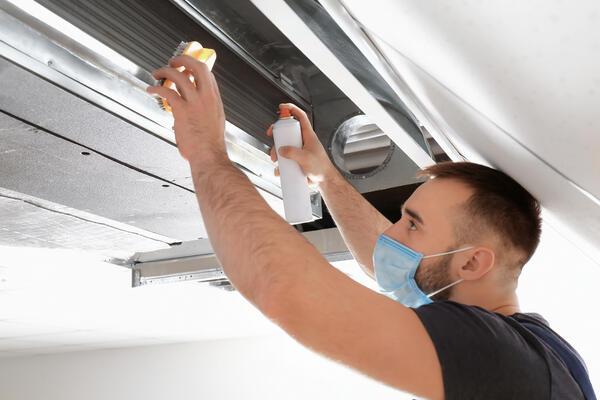Mold can cause a variety of problems inside buildings if it grows unchecked, including health problems and property damage. Mold spots are obvious when they grow in exposed locations, but those hidden from view may go unnoticed until a large area is covered. Typically, small patches of mold can be cleaned up by maintenance personnel, but larger infestations require professional mold remediation services.
Mold problems are most severe when part of a building has been flooded due to extreme weather conditions, as mold thrives in damp environments. Mold and moisture damage are very difficult to prevent after a flood, but their impact can be minimized by removing contaminated materials as quickly as possible.
Mold produces allergens and irritants. An allergen is a substance that only affects individuals who are susceptible to it, while an irritant affects everyone regardless. Asthma patients should take special care to avoid exposure to mold, as it can trigger attacks.
Control indoor air humidity and avoid mold problems.
Mold prevention with air dehumidification
Completely removing mold and its spores from indoor spaces is nearly impossible, especially when you consider that the microscopic spores become airborne. Simply cleaning up the mold will not solve the problem, as the mold will grow in other places from the propagated spores.
However, mold has a weak point: it can only survive in humid environments and dies when the moisture content of the air decreases.
- One of the best strategies for fighting mold is to keep relative humidity below 60%, as recommended by ASHRAE and the U.S. EPA.
- Just consider that the air should not be excessively dehumidified; going below 30% relative humidity is not recommended.
A mechanical engineering company can determine whether indoor air has an adequate level of relative humidity and design a suitable dehumidification system if necessary. When air conditioning systems have adequate capacity for the indoor space they serve, they can often achieve humidity control without an additional dehumidifier. Excessive humidity is a common problem caused by large air conditioners.
Moisture control can kill mold, but finding and removing it is still important — dead spores and mold particles also cause irritation and allergies. However, if moisture issues are addressed before mold is cleaned, it will not grow back.
When can mold be cleaned effectively?
Mold can usually be cleaned effectively from smooth surfaces, but porous materials may need to be discarded. If mold affects an air duct system, for example, the sheet metal components can be cleaned but the insulation must be replaced. Wet furniture and carpets are also very susceptible to mold damage due to their porous nature.

Large-scale mold infestation requires professional remediation services as it has the potential to release a large volume of spores into the air when disturbed. Large patches of mold are typically isolated from the rest of the building during the cleaning process to contain spores, and personnel carrying out the work are equipped with protective equipment.
Mold prevention in air handlers and ducts is especially important since these systems distribute air to many indoor spaces. If these components are affected by mold, you will soon notice stains in many other places because the ventilation system is distributing spores. To prevent hidden mold growth, have your HVAC installations inspected by professional mechanical engineers at regular intervals.
If you've noticed an increase in allergies and health problems among building occupants, the cause could be a large patch of mold hidden from view. However, performing laboratory tests is very important – accumulated dirt and other types of debris sometimes resemble mold, but can be cleaned much more easily because spores and other harmful substances are not released.

